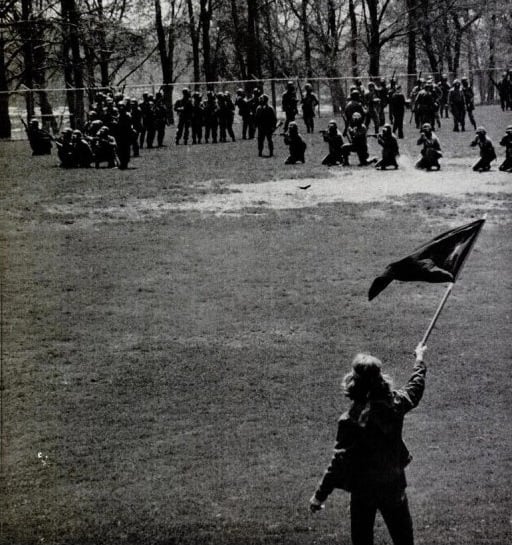The Kent State Shootings, 1970 (Edexcel GCSE History): Revision Note
Exam code: 1HI0
Summary
Students all across America played an important role in the anti-Vietnam War movement. In May 1970, tragic events on the campus of Kent State University led to the deaths of four students, saw hundreds of other universities erupt in protest and caused anti-war demonstrations to make headlines all over the world.
The student movement against the Vietnam War
In the years immediately following the Second World War, America experienced a population boom
The babies born during the post-war increase became known as ‘baby boomers’
The baby boomers became adults during the Vietnam War, meaning there were more young people - and more students - in America than there had ever been before
The number of students in America increased from 6 million in 1965, to 8.5 million in 1970
Many baby boomers rejected their parent's views, values and ideas
This was especially true of views on the Vietnam War
Baby boomers embraced Eastern spiritualism and the hippy movement
This was summed up by the phrase ‘make love, not war’
One of the main places where young people gathered and shared ideas was university campuses
As a result, students played an increasingly important role in the anti-war movement
What caused the Kent State shootings?
There had been anti-war protests at Kent State University, Ohio throughout 1969 but these escalated following the US invasion of Cambodia in 1970
Feelings were inflamed on 1 May 1970 when President Richard Nixon referred to student protestors as “bums” and “the luckiest people in the world”
On 2 May, the Campus Officer Training Corps military facility at Kent State University was burned down by protesting students
This led the Mayor of Ohio to declare an emergency and mobilise the National Guard
On 4 May, around 3,000 people joined a demonstration on Kent State University's campus
National Guard troops ordered the protestors to leave and used tear gas to make them disperse
They refused and threw rocks and empty tear gas canisters back at the troops
The National Guard troops them opened fire on the protestors which left:
Four dead
Nine injured

Reactions to the Kent State shootings
The deaths of the students caused outrage and made headlines both in America and around the world
The fact that the dead students were white middle-class Americans, two of whom were just walking passed the demonstration, appalled white middle-class America
2 million students went on strike in protest against the shootings which led to the closure of over 400 colleges
The shootings also led to increased support for the anti-war movement and intense criticism of Nixon following his “bum” comments about student demonstrators
Examiner Tips and Tricks
When analysing and evaluating interpretation, you must use your knowledge of the subject to judge how complete a picture it provides. An interpretation can be accurate - but it doesn't mean it is telling you everything you need to know about a topic.

Unlock more, it's free!
Did this page help you?